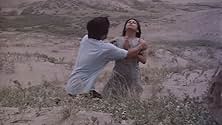Elsa saw the blessed Virgin Mary who had changed her life and caused a hysteria in a poor isolated village.Elsa saw the blessed Virgin Mary who had changed her life and caused a hysteria in a poor isolated village.Elsa saw the blessed Virgin Mary who had changed her life and caused a hysteria in a poor isolated village.
- Awards
- 12 wins & 13 nominations
Pen Medina
- Pilo
- (as Crispin Medina)
Storyline
Did you know
- TriviaThe first film produced by the Philippine government film body Experimental Cinema of the Philippines (ECP). This won nine of 11 awards given at the 1982 Metro Manila Filmfest.
- Alternate versionsThe restored versions adding the ABS-CBN and Central Digital Lab logos followed by the extra credit at the beginning, and additional credits were also added following the end credits at the end.
- ConnectionsFeatured in 30th Metro Manila Film Festival-Philippines 2004 Awards Night (2004)
Featured review
Frame for frame, Himala (1982) may be the most beautifully shot Philippine film I've ever seen. With a photographer's eye, director Ishmael Bernal (City After Dark, Relasyon) turns an arid, non-descript countryside Philippine town into a mystical place with real people. The Superstar of Philippine Cinema, Nora Aunor, playing the lead role, works with the visual setting as much as it works with her. She's the ever-sad Elsa, an illegitimate child who one day claims, like many of us Filipinos like to do, to have seen the Virgin Mary, who has endowed her with super healing powers. A battle between her and a doubtful, sometimes vengeful, Catholic church ensues, and she starts winning. Throngs of peasant folk travel from afar to get their miracle on, and the once-filled church dwindles to a measly ten people. Is she real, or is it a hoax? For a suffering people short on hope in the faith they were given, and seeking it elsewhere, anywhere - does it even matter? Acting with just her eyes for most of the film, Aunor is mesmerizing. She saves all that pent-up melodrama for the film's final scene, where she reveals herself as a dialectical materialist: "Walang himala! Ang himala ay nasa puso ng tao
ang himala ay nasa puso nating lahat!" (There is no miracle! The miracle is in the heart of a person
the miracle is in all our hearts!). Himala makes a potent, poignant statement on Filipinos' faith, making a subtle connection between the colonial legacy of the church and the suffering that drives us toward and away from it.
- prometheusbrown
- Dec 21, 2008
- Permalink
- How long is Miracle?Powered by Alexa
Details
Contribute to this page
Suggest an edit or add missing content


























